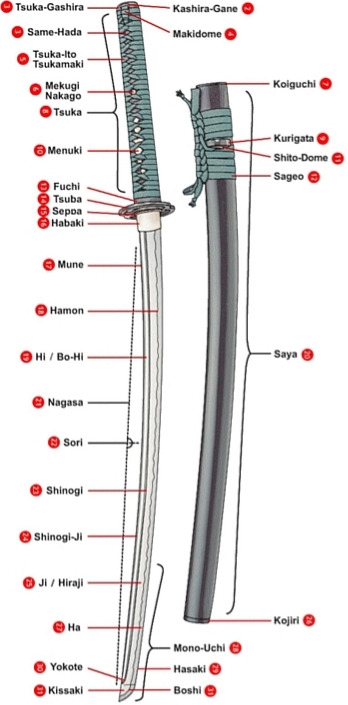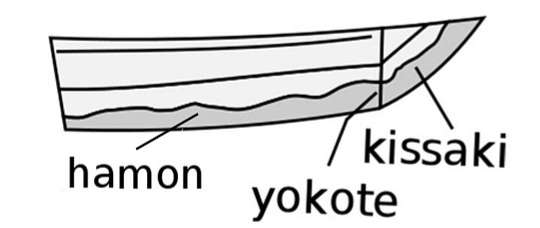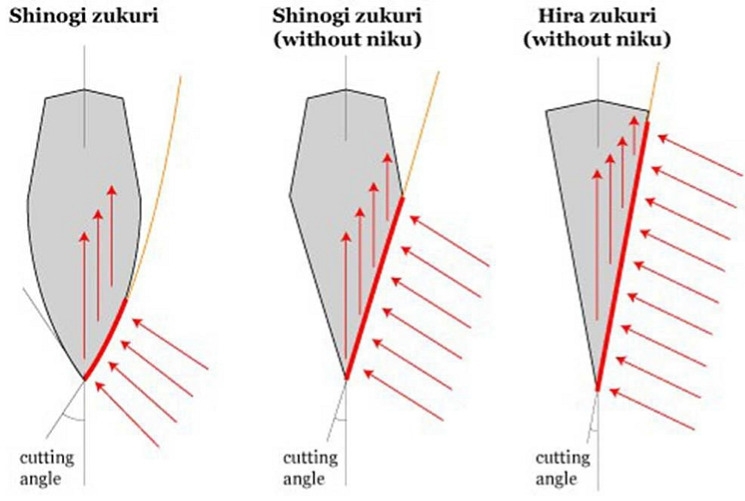Nosegay Japanese Sword - T-10 Steel, Yokote - Choji Hamon
Code: ST-23


Related products

Tatami Omote (Makiwara) made of natural igusa, ideal mats for tameshigiri, slash test and chopping practice. Affordable, eco-friendly mats faithfully mimic the resistance of the...

stojan pro meče & osmipatrový & matný, černý

hanging wooden stand & black, matt & for 2 samurai swords & for katanas & for wakizashi

hanging wooden stand & black, matt & for 4 samurai swords & for katanas & for wakizashi

two-tier wooden lacquered stand & for katanas & for wakizashi & for tanta
Product detailed description
Katana Nosegay Japanese Sword T-10 Mono-Steel, Real Choji Hamon, Yokote
2.35 Shaku, chu kissaki
Forged blade made of the highest quality T-10 steel. Steel in Maru monocomposite configuration - differentially hardened. T-10 carbon steel is very strong and holds its edge very well. The blade without the bo-hi groove has been hand polished in the final stage with hazuya stone - thus achieving an almost razor sharp edge and a mirror-like shine. This blade has been tried and tested to remove everything in its path ! Sori (blade curvature) is specially designed to achieve the finest and cleanest cuts possible. The T-10 carbon monocomposite steel has an impressive hardness in the HRC range - the perfect combination of this hardness is accentuated by the curvature of the Sori blade , which makes it easy to cut through tatami, straw mats or bamboo for tameshigiri. The full tang construction of this blade greatly enhances the strength of the sword.
high-end katana with a blade length of 2.35 Shaku (71.2 cm)
The tip of the blade is shaped shinogi-zukuri and chu kissaki with a true Diamond-Shaped Yokote, which is very well defined by the hamon running full length through the Boshi. The distinctive real Choji Hamon is created according to ancient traditional methods based on the master blacksmith's many years of experience.
Do you need some advice?
We will be happy to help you with your selection or answer your product questions! Call our customer service line at 702 049 048, which is available for you Mon - Fri, 7:30 am - 4:00 pm!technical description of components

- Blade material - T10 Hi-carbon steel
- Saya: (shell - cover) made of hardwood in black glossy finish with golden flowers. High-quality silk Sage-O braid is tied around the Kurigata (button) of the Sayi (sheath-cloth).
- Tsuba: (umbrella) ornamental
- Tsuka: (handle) wooden core wrapped with genuine stingray (Samegawa) leather with black braid - Ito. The blade of the katana is secured with two mekugi (bamboo pins). You can remove the blade from the handle by pulling out these pins. On each side of the Tsuka (handle) there is a menuki (gold ornament under the braid). Decorated end of handle (Kashira).
- Total length of katana (without saya) - 104 cm
- Blade length (Nagasa) - 71,2 cm
- Length of the handle - 30 cm
- Tip length (Kissaki) - 3,8 cm
- Blade thickness (for Habaki) - 0.75 cm
- Blade height (for Habaki) - 3.2 cm
- Blade curvature (Sori) - 2.2 cm
- Blade thickness (Kissaki) - 0.5 cm
- Blade height (Kissaki) - 2.3 cm
- Habaki - brass (length 2.8cm)
We will make a katana for you according to your requirements
We make katanas, wakizashi and tanto knives to customer's specifications. The lead time after payment of the 30% deposit ranges from 60-90 calendar days.grounds for non-recognition of warranty - misuse

- In general, these are all activities except for traditional chopping test techniques, which involve chopping into special mats.
- Chopping branches, trees and bushes: for this activity people have developed other tools such as axes or machetes
- Chopping or swordplay with another sword: destructive damage to the blade of a samurai sword occurs - samurai avoided any direct contact with the enemy to avoid damaging the blade. The repair was long and expensive
- Never carry a sharp samurai sword with the blade exposed in public: always keep the sword sheathed in the Saya (scabbard). In Germany and other EU countries, this is even an obligation prescribed by gun law
- Never insert a dirty blade into the Saya: If you are performing chopping tests on fruit, clean and preserve the blade immediately after chopping, otherwise the blade will rust and oxidize
- Never leave your sword in a damp place such as a porch, shed, cellar or conservatory: This traditional weapon certainly doesn't deserve such treatment. Always clean the blade after use, brush with oil and store the sword in a dry place.
Dellinger guarantee
Products supplied by Dellinger come with a 100% satisfaction guarantee or a risk-free money back guarantee. We guarantee an excellent product that will give you the best service and is proven by many satisfied customers. Each piece can become a wise gift solution for a birthday, wedding or Christmas. Every product that Dellinger offers is carefully inspected. We bring you a lifetime warranty against any hidden defects. If you have any questions - our team is fully at your disposal and will try to help you in any (even unpleasant) situation.
Wakizashi Odawara & Nagasa 1,60 Shaku & Japanese Sword & AISI 1045 carbon steel & polished Hamon imitation & Diamond Shaped Yokote & chu-kissaki tip & Bo-Hi gutter & Blade...

Wakizashi Shimane & Nagasa 1,60 Shaku & Japanese Sword & AISI 1045 carbon steel & polished Hamon imitation & Diamond Shaped Yokote & chu-kissaki tip & Bo-Hi groove & Blade...


Wakizashi Akaei & Nagasa 1,66 Shaku & Japanese Sword & AISI 1095 Hi-carbon steel & real hamon Choji & Diamond Shaped Yokote & chu-kissaki tip & Bo-Hi gutter & blade hardness...










